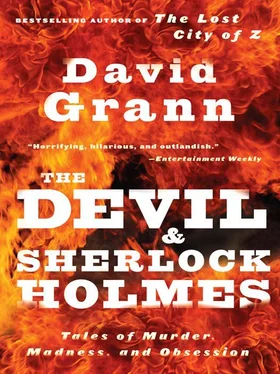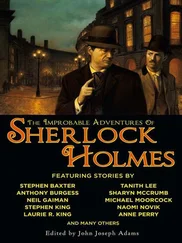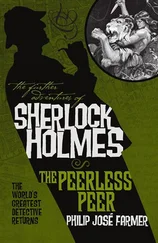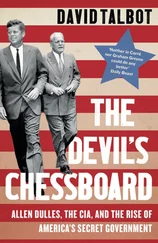Gilbert was unsure what to make of his story, and she began to approach people who were involved in the case, asking them questions. “My friends thought I was crazy,” Gilbert recalls. “I’d never done anything like this in my life.”
One morning, when Willingham’s parents came to visit him, Gilbert arranged to see them first, at a coffee shop near the prison. Gene, who was in his seventies, had the Willingham look, though his black hair had gray streaks and his dark eyes were magnified by glasses. Eugenia, who was in her fifties, with silvery hair, was as sweet and talkative as her husband was stern and reserved. The drive from Oklahoma to Texas took six hours, and they had woken at three in the morning; because they could not afford a motel, they would have to return home later that day. “I feel like a real burden to them,” Willingham had written Gilbert.
As Gene and Eugenia sipped coffee, they told Gilbert how grateful they were that someone had finally taken an interest in Todd’s case. Gene said that his son, though he had flaws, was no killer.
The evening before the fire, Eugenia said, she had spoken on the phone with Todd. She and Gene were planning to visit two days later, on Christmas Eve, and Todd told her that he and Stacy and the kids had just picked up family photographs. “He said, ‘We got your pictures for Christmas,’ ” she recalled. “He put Amber on the phone, and she was tattling on one of the twins. Todd didn’t seem upset. If something was bothering him, I would have known.”
Gene and Eugenia got up to go: they didn’t want to miss any of the four hours that were allotted for the visit with their son. Before they left, Gene said, “You’ll let us know if you find anything, won’t you?”
Over the next few weeks, Gilbert continued to track down sources. Many of them, including the Barbees, remained convinced that Willingham was guilty, but several of his friends and relatives had doubts. So did some people in law enforcement. Willingham’s former probation officer in Oklahoma, Polly Goodin, recently told me that Willingham had never demonstrated bizarre or sociopathic behavior. “He was probably one of my favorite kids,” she said. Even a former judge named Bebe Bridges—who had often stood, as she put it, on the “opposite side” of Willingham in the legal system, and who had sent him to jail for stealing—told me that she could not imagine him killing his children. “He was polite, and he seemed to care,” she said. “His convictions had been for dumb-kid stuff. Even the things stolen weren’t significant.” Several months before the fire, Willingham tracked Goodin down at her office, and proudly showed her photographs of Stacy and the kids. “He wanted Bebe and me to know he’d been doing good,” Goodin recalled.
Eventually, Gilbert returned to Corsicana to interview Stacy, who had agreed to meet at the bed-and-breakfast where Gilbert was staying. Stacy was slightly plump, with pale, round cheeks and feathered dark-blond hair; her bangs were held in place by gel, and her face was heavily made up. According to a tape recording of the conversation, Stacy said that nothing unusual had happened in the days before the fire. She and Willingham had not fought, and were preparing for the holiday. Though Vasquez, the arson expert, had recalled finding the space heater off, Stacy was sure that, at least on the day of the incident—a cool winter morning—it had been on. “I remember turning it down,” she recalled. “I always thought, Gosh, could Amber have put something in there?” Stacy added that, more than once, she had caught Amber “putting things too close to it.”
Willingham had often not treated her well, she recalled, and after his incarceration she had left him for a man who did. But she didn’t think that her former husband should be on death row. “I don’t think he did it,” she said, crying.
Though only the babysitter had appeared as a witness for the defense during the main trial, several family members, including Stacy, testified during the penalty phase, asking the jury to spare Willingham’s life. When Stacy was on the stand, Jackson grilled her about the “significance” of Willingham’s “very large tattoo of a skull, encircled by some kind of a serpent.”
“It’s just a tattoo,” Stacy responded.
“He just likes skulls and snakes. Is that what you’re saying?”
“No. He just had—he got a tattoo on him.”
The prosecution cited such evidence in asserting that Willingham fit the profile of a sociopath, and brought forth two medical experts to confirm the theory. Neither had met Willingham. One of them was Tim Gregory, a psychologist with a master’s degree in marriage and family issues, who had previously gone goose hunting with Jackson, and had not published any research in the field of sociopathic behavior. His practice was devoted to family counselling.
At one point, Jackson showed Gregory Exhibit No. 60—a photograph of an Iron Maiden poster that had hung in Willingham’s house—and asked the psychologist to interpret it. “This one is a picture of a skull, with a fist being punched through the skull,” Gregory said; the image displayed “violence” and “death.” Gregory looked at photographs of other music posters owned by Willingham. “There’s a hooded skull, with wings and a hatchet,” Gregory continued. “And all of these are in fire, depicting—it reminds me of something like Hell. And there’s a picture—a Led Zeppelin picture of a falling angel.… I see there’s an association many times with cultive-type of activities. A focus on death, dying. Many times individuals that have a lot of this type of art have interest in satanic-type activities.”
The other medical expert was James P. Grigson, a forensic psychiatrist. He testified so often for the prosecution in capital-punishment cases that he had become known as Dr. Death. (A Texas appellate judge once wrote that when Grigson appeared on the stand the defendant might as well “commence writing out his last will and testament.”) Grigson suggested that Willingham was an “extremely severe sociopath,” and that “no pill” or treatment could help him. Grigson had previously used nearly the same words in helping to secure a death sentence against Randall Dale Adams, who had been convicted of murdering a police officer, in 1977. After Adams, who had no prior criminal record, spent a dozen years in prison—and once came within seventy-two hours of being executed—new evidence emerged that absolved him, and he was released. In 1995, three years after Willingham’s trial, Grigson was expelled from the American Psychiatric Association for violating ethics. The association stated that Grigson had repeatedly arrived at a “psychiatric diagnosis without first having examined the individuals in question, and for indicating, while testifying in court as an expert witness, that he could predict with 100-per-cent certainty that the individuals would engage in future violent acts.”
After speaking to Stacy, Gilbert had one more person she wanted to interview: the jailhouse informant Johnny Webb, who was incarcerated in Iowa Park, Texas. She wrote to Webb, who said that she could see him, and they met in the prison visiting room. A man in his late twenties, he had pallid skin and a closely shaved head; his eyes were jumpy, and his entire body seemed to tremble. A reporter who once met him described him to me as “nervous as a cat around rocking chairs.” Webb had begun taking drugs when he was nine years old, and had been convicted of, among other things, car theft, selling marijuana, forgery, and robbery.
As Gilbert chatted with him, she thought that he seemed paranoid. During Willingham’s trial, Webb disclosed that he had been given a diagnosis of “post-traumatic stress disorder” after he was sexually assaulted in prison, in 1988, and that he often suffered from “mental impairment.” Under cross-examination, Webb testified that he had no recollection of a robbery that he had pleaded guilty to only months earlier.
Читать дальше











